The Light Pavilion by Lebbeus Woods with Christoph a. Kumpusch
The first and only built project by the late experimental architect Lebbeus Woods is the Light Pavilion, one of of three large-scale installations at Steven Holl's recently completed Sliced Porosity Block in Chengdu, China (+ slideshow).
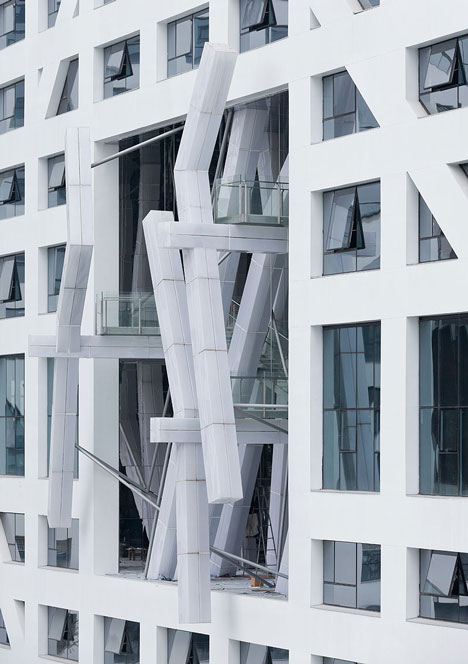
Conceived as an entanglement of light and geometry, the four-storey construction of steel rods and glass platforms is suspended within a large opening in one of the five towers that make up the new mixed-use complex.
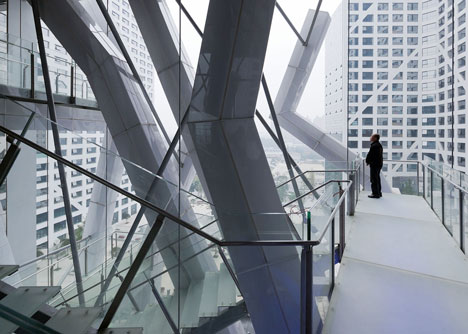
Staircases wind up through a series of illuminated columns, leading to balconies overlooking the pools and terraces of Sliced Porosity's central plaza and the buildings of the city beyond.
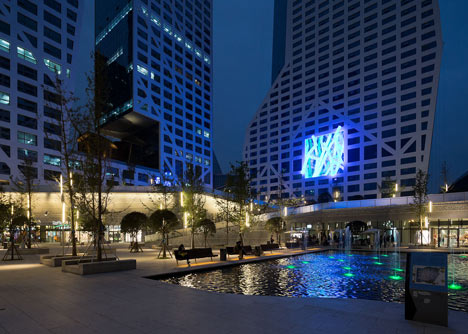
Woods designed the space in collaboration with architect and professor Christoph a. Kumpusch and it was completed shortly before his death last October.
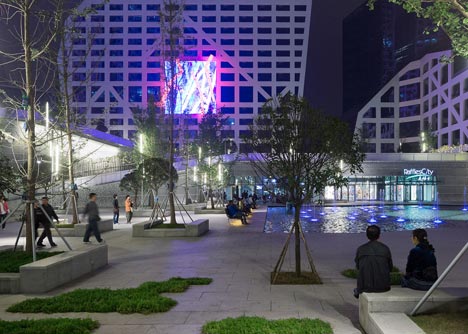
"Too much could be made of the fact that the Light Pavilion is Lebbeus Woods' first and, sadly, last 'built' work," said Kumpusch. "This project, from my perspective, was an extension of drawing, a condensation of thoughts as a material manifestation."
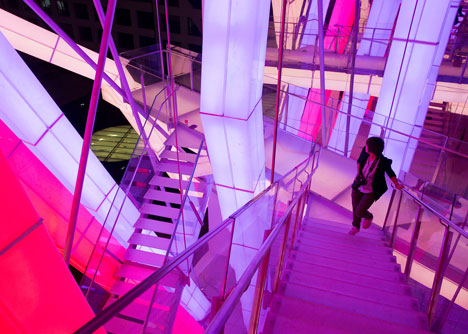
Kumpusch describes the pavilion as a "prototypical space of the future". He explained: "The Light Pavilion is designed to be an experimental space, one that gives us the opportunity to experience a type of space we haven't experienced before."
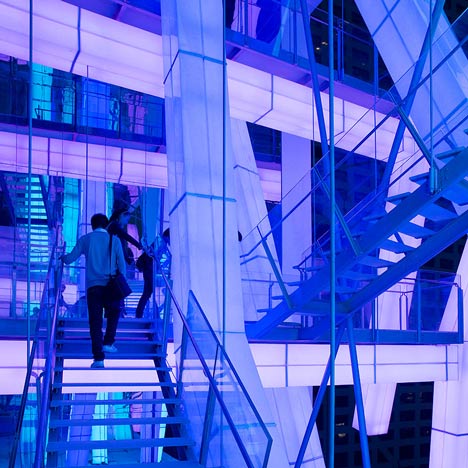
By day the structure appears as a deconstruction of the tower's gridded steel framework, but by night it transforms into lines of glowing colour that change in relation to the time of day, the month and the year.

"The space has been designed to expand the scope and depth of our experiences," added Kumpusch. "That is its sole purpose, its only function, encouraging us to encounter new dimensions of experience."
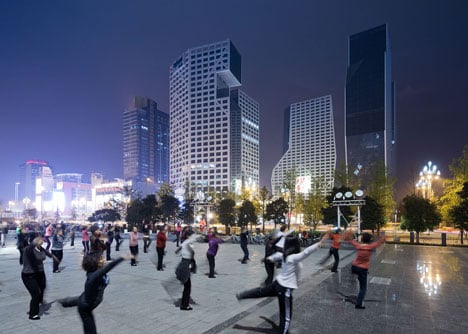
Steven Holl's Sliced Porosity Block is a mixed-use commercial complex conceived as an alternative to the "towers and podium" approach commonly adopted projects of a similar scale. The five towers surround a plaza that wraps over a ground floor shopping centre.
Woods (1940-2012) was long admired by students and academics for his fantastical drawings that verged on science fiction. See some of his early sketches from the 1980s in our earlier story.
Photography is by Iwan Baan.
Here's the full statement from Christoph a. Kumpusch:
Too much could be made of the fact that the Light Pavilion is Lebbeus Woods' first and, sadly, last "built" work as if building was valued over drawing or thinking. This project, from my perspective, was an extension of drawing, a condensation of thoughts as a material manifestation. Pouring over construction documents with Lebbeus again and again, I can safely say that the ideas did not stop when the building process began. Rather, the demands of a "real project" triggered more conceptualization.
The Light Pavilion is designed to be an experimental space, one that gives us the opportunity to experience a type of space we haven't experienced before. Whether it will be a pleasant or unpleasant experience; exciting or dull; uplifting or frightening; inspiring or depressing; worthwhile or a waste of time, it is not determined by the fulfillment of our familiar expectations, never having encountered such a space before. We shall simply have to go into the space and pass through it. That is the most crucial aspect of its experimental nature, and we - its transient inhabitants - are experimentalists.
Located within an innovative mixed-use complex of towers designed by Steven Holl Architects, the Light Pavilion offers visitors the opportunity to explore a prototypical space of the future. Visitors walk up and through a complex network of luminous spaces that are ephemeral, evocative and changing. Following sloping glass and steel stairs suspended between glowing structural columns, visitors ascend by several possible paths to balconies overlooking pools and landscaped gardens in the plaza below while framing views of the city of Chengdu beyond. The elements defining it do not always follow the rectilinear geometry of its architectural setting, but instead obey a geometry defined by dynamic movement. Their deviation from the rectilinear grid releases its spaces from static stability and sets them in motion. The structural columns articulating the Pavilion's interior spaces are illuminated from within and visibly glow at night, creating a luminous space into which the solid architectural elements appear to merge.
From distances across the city, the Pavilion is a beacon of light. The structure radiates subtly changing colors for different holidays and times of day, months and years. The space has been designed to expand the scope and depth of our experiences. That is its sole purpose, its only function, encouraging us to encounter new dimensions of experience.
I prefer to see this not as a stand-alone built work, but merely the last leaf of a stunning portfolio and a culmination of so many dreams.